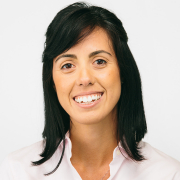Plastic has altered our culture, yet its waste is a contributor to global environmental changes. When plastic breaks down, it leaves behind micro- and nanoscale plastics (MNPs) that differ from larger plastics in their properties and effects. MNPs are increasing in abundance, are more easily absorbed, and can be distributed throughout the body. They may also alter cellular function and physiology and are transferred through generations and the food chain, potentially impacting energy dynamics, growth, development, and reproduction.
Our rising global population is expected to increase not only plastics production but also pharmaceuticals (PHARs) and illegal drugs (IDs) consumption. Wastewater treatment cannot entirely eliminate these drugs, and so they end up in rivers and the coast. PHARs have been detected adsorbed to plastics, but it is unclear if this is also true for IDs. PLASTIdrugs will tackle this topic in situ in two regions of the Atlantic Ocean: the Bays of Brest (France) and Santos (Brazil). At Santos, the lack of proper wastewater treatment results in cocaine, analgesics, antidepressants, antibiotics, and hormones poisoning the bay. While there is no data for the Bay of Brest, IDs, and PHARs are also found in municipal effluents in France, potentially affecting its coastal habitats as well. PLASTIdrugs will (i) characterize the levels of drugs classified as emerging pollutants (cocaine) and priority pollutants (antibiotics and hormones) in the water and plastic debris from two Atlantic coast areas. It will also (ii) investigate the contribution of these chemicals to the risks and long-term physiological effects of MNPs on coastal species like bivalves. To this end, it will combine environmental chemistry, cellular assays, bioenergetics, and developmental biology. Lastly, it seeks to interact with the local community and provide policymakers with quality data to help establish sustainable coastal ecosystems.


 Rewrite
Scroll to top
Rewrite
Scroll to top